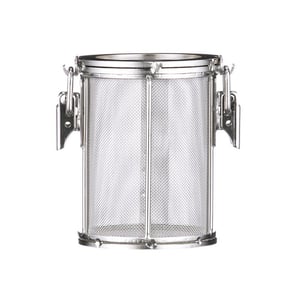 Different companies will have different needs. What works for an automotive manufacturer won’t be a great fit for a company specializing in seafood harvesting and processing, after all. While some needs are somewhat universal, there are many situations where a custom solution is the best way to improve quality, consistency, and manufacturing throughput.
Different companies will have different needs. What works for an automotive manufacturer won’t be a great fit for a company specializing in seafood harvesting and processing, after all. While some needs are somewhat universal, there are many situations where a custom solution is the best way to improve quality, consistency, and manufacturing throughput.
Marlin Steel’s engineering team frequently create custom wire baskets for specialized processes. This process typically starts with Marlin’s degreed mechanical engineers asking the client a few questions about their process and the parts/materials that the baskets will hold.
Why is asking these questions important? After all, doesn’t Marlin Steel offer generic in-stock baskets as well as custom solutions?
While Marlin does offer a variety of basic stainless steel wire baskets that are ready-to-ship at a moment’s notice, taking the time to learn some specifics helps make a basket that better contributes to improving quality, consistency, and throughput.
Which questions are the right ones to ask when building a custom wire basket? The ones in the custom basket questionnaire form are a good start. However, in a recent custom wire basket order, Marlin’s degreed engineers decided to ask a few more questions to help them further improve their designs. Here’s a short list of the additional questions, and why they helped to make a better custom wire basket for the client:
Question 1: Where Can the Parts Be Gripped?
For some manufactured parts—especially ones with a “no-scratch” surface requirement—it’s vital to ensure that the part is handled with the utmost care. To do that, it’s necessary to know exactly where the part can be gripped to avoid causing damage.
Even delicate parts assemblies often have a few reinforced points where casual contact is less likely to cause damage. Knowing where these hard points are and designing the basket to grip them can help to minimize the risk of damage to held parts.
Question 2: Where Shouldn’t the Parts Ever Be Touched?
Even on high-durability, heavy-duty parts, there may be some areas where direct contact with the wire basket should be prohibited. So, in addition to asking where parts should be held, Marlin Steel’s degreed engineers asked to know where the client’s parts should never be touched.
This helped in the design of the basket by allowing Marlin’s degreed engineers to account for the ultra-delicate spots of the parts being processed. By doing so, the custom wire basket could be made in a way that reduced the risk of damaging the parts and forcing them to go through resurfacing or remanufacturing.
Question 3: Would Increasing the Basket’s Capacity Help?
In many cases, a client will tell Marlin’s degreed engineers exactly how many parts they expect a custom wire basket to hold. Marlin Steel’s degreed engineers frequently find that they’re able to exceed these minimum load sizes by making compartments smaller, adding layers to the basket, or simply making the basket itself bigger (if the process equipment allows for larger baskets).
However, just because more parts can be fit into a basket or piece of processing equipment doesn’t necessarily mean that they should be.
For example, say that a downstream assembly process can only create five car engines per hour, and each engine is a six-cylinder. If the basket for finishing cylinders holds 60 cylinders through an hour-long process instead of 30 cylinders, that won’t do anything to speed up the manufacturing process. Instead, a backlog of cylinders will build up, leading to idle capacity and increased downtime for the cylinder finishing process.
This is why Marlin Steel’s engineering team asked if the client wanted to fit more parts into the basket rather than simply maxing out the basket’s capacity. Also, leaving more open space between parts can help to improve air flow, making parts easier to dry quickly.
Question 4: If the Part is Held a Certain Way, Would That Improve Cycle Time?
In some processes, particularly ones that use factory automation to load or unload parts from a basket, holding parts in a specific orientation is crucial for ensuring speed and consistency. So, one of the questions Marlin’s engineering team asked the client was if their custom wire baskets should hold parts in a specific orientation.
By holding parts in the right direction, they can be made easier to insert and remove, helping to speed up cycle times so productivity can be improved. For automated parts insertion and removal, having baskets hold parts in a specific orientation increases consistency and minimizes the risk of parts being accidentally damaged by handling equipment. However, to ensure this added consistency, the baskets themselves need to conform to incredibly tight parts tolerances so there is virtually no variability from one basket to the next.
Because Marlin’s degreed engineers decided to ask these questions of the client, they were able to subtly improve their custom wire basket design to better conform to the client’s needs. Do you need a highly-customized steel wire basket for your own manufacturing process? Reach out to the masters of delivering Quality, Engineered Quick® at Marlin Steel!



.gif)


